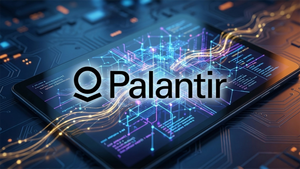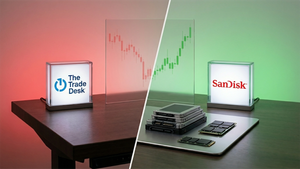
In a monumental strategic maneuver poised to redefine the landscape of electronic design automation, Synopsys (NASDAQ: SNPS) has finalized its approximately $35 billion acquisition of Ansys (NASDAQ: ANSS). This colossal merger, which officially closed on July 17, 2025, represents a decisive leap for Synopsys beyond its traditional semiconductor design stronghold, propelling it into a comprehensive silicon-to-systems design powerhouse. The deal is set to integrate Ansys's cutting-edge multiphysics simulation and analysis capabilities with Synopsys's dominant EDA tools and semiconductor IP, promising a unified platform crucial for navigating the complexities of modern technological advancement.
The implications of this merger are far-reaching, directly addressing several "mega trends" currently reshaping the global technology sector: the explosive growth of artificial intelligence (AI), the rise of software-defined systems, and the pervasive proliferation of silicon across diverse applications. By converging chip design with advanced system-level simulation, Synopsys aims to empower engineers to create more efficient, reliable, and high-performing intelligent systems. However, this strategic expansion comes at a time of heightened geopolitical tension, particularly with U.S. export restrictions significantly impacting Synopsys's Design IP segment, adding a layer of complexity to its ambitious growth trajectory.
A Unified Vision: Why Synopsys's Ansys Acquisition Matters
The completion of Synopsys's $35 billion acquisition of Ansys marks a pivotal moment in the evolution of engineering design. Announced in January 2024, the transaction culminated after months of rigorous regulatory scrutiny, receiving clearances from key jurisdictions including the U.S., EU, UK, and notably, China. This strategic integration is not merely an expansion but a fundamental recalibration of Synopsys's offering, moving from individual components to a holistic "silicon-to-systems" design paradigm.
Specifically, the deal saw Ansys shareholders receive $197.00 in cash and 0.3450 shares of Synopsys common stock for each Ansys share. Synopsys funded the cash portion through a combination of existing cash and $16 billion in committed debt financing, valuing Ansys at roughly $35 billion. The core rationale is to bridge the historical divide between semiconductor design and system-level multiphysics simulation. Synopsys, a leader in electronic design automation (EDA) tools for chip design, now incorporates Ansys’s formidable expertise in computational fluid dynamics (CFD), finite element analysis (FEA), and electromagnetic modeling. This convergence is vital for designing advanced systems where electrical, thermal, and mechanical interactions are increasingly interdependent and critical for performance. For instance, integrating Ansys’s RedHawk-SC for power integrity with Synopsys’s Fusion Compiler will allow designers to identify and mitigate thermal hotspots and mechanical stresses early in the design cycle, preventing costly late-stage revisions. Initial market reactions were mixed, with Ansys shares seeing a slight decrease and Synopsys shares a modest increase post-announcement, reflecting the magnitude and complexity of the integration ahead.
Reshaping the Landscape: Winners and Losers in the New Era
The Synopsys-Ansys merger is poised to create distinct winners and losers across the technology ecosystem, fundamentally altering competitive dynamics and opening new avenues for innovation. The most obvious winner is Synopsys (NASDAQ: SNPS) itself. By integrating Ansys's (NASDAQ: ANSS) simulation capabilities, Synopsys significantly expands its total addressable market (TAM) from an estimated $19 billion in EDA to an initial $28 billion in silicon-to-systems engineering solutions, with projections reaching $31 billion. This expanded portfolio is expected to fuel double-digit growth, enhance non-GAAP operating margins by approximately 125 basis points, and boost unlevered free cash flow margins by about 75 basis points within the first full year post-closing. The anticipated $400 million in run-rate cost synergies by year three and $400 million in revenue synergies by year four underscore the financial upside. This strategic move cements Synopsys's position as a dominant force in the broader design and simulation space, offering a more complete solution for complex, AI-driven, and software-defined systems.
For Ansys (NASDAQ: ANSS) shareholders, the acquisition represents a significant liquidity event and a premium for their investment. The integration into a larger entity provides Ansys's technologies with broader market reach and deeper integration into the semiconductor design flow, potentially accelerating the adoption of its simulation tools within a more unified engineering environment. The combined entity is better equipped to address the escalating demands for advanced design and verification across diverse industries. Conversely, competitors such as Cadence Design Systems (NASDAQ: CDNS) and Siemens EDA (a division of Siemens (ETR: SIE)) face increased competitive pressure. While Cadence has been expanding its system analysis capabilities, the Synopsys-Ansys merger creates a formidable integrated offering that could challenge Cadence’s market share, particularly in highly integrated chip-to-system design environments. These companies will likely need to accelerate their own efforts in multiphysics simulation or seek strategic partnerships to counter the combined might of Synopsys and Ansys.
However, Synopsys's Design IP segment has faced headwinds, primarily due to U.S. export restrictions targeting China. These restrictions, implemented in late May 2025 and partially lifted in July, initially limited the sale of advanced chip design software and IP. While some restrictions were eased, the initial damage to customer confidence and spending appetite in China led to an 8% year-over-year decline in the Design IP segment for Q3 2025. This geopolitical factor poses a significant challenge, potentially offsetting some of the anticipated growth from the Ansys acquisition, especially in a critical market like China. The broader technology industry, particularly companies heavily reliant on advanced chip design and simulation, will benefit from the more integrated tools, enabling faster innovation cycles and more robust product development for complex AI, 5G, and automotive applications.
Industry Impact and Broader Implications
The Synopsys-Ansys merger transcends a mere corporate acquisition; it signifies a profound shift in the engineering design industry, reflecting and accelerating several macroscopic trends. Firstly, it underscores the relentless drive towards design convergence and holistic system-level optimization. As chips become increasingly complex, featuring heterogeneous architectures and integrating diverse functionalities, the traditional siloed approach to electrical, thermal, and mechanical design is no longer sustainable. This merger positions Synopsys at the forefront of this convergence, offering a unified environment where designers can address multiphysics challenges from the silicon level all the way to the complete system, critical for advanced applications like AI accelerators, autonomous vehicles, and sophisticated 5G infrastructure. This move essentially legitimizes and standardizes the "shift-left" methodology, enabling early-stage detection and mitigation of design flaws that historically would only surface during expensive and time-consuming physical prototyping.
Secondly, the acquisition significantly strengthens the combined entity's ability to capitalize on the "mega trends" of AI, silicon proliferation, and software-defined systems. AI, in particular, is not just a driver for new product design but also a transformative force within the EDA and simulation industries themselves. The integration of Synopsys's AI-driven design tools with Ansys's simulation platforms promises to create intelligent design flows that can optimize performance, power, and area more effectively and efficiently. This will be crucial for companies pushing the boundaries of AI hardware, which demands unprecedented levels of computational efficiency and thermal management. The widespread proliferation of silicon into every aspect of modern life, from IoT devices to sophisticated data centers, means that robust and integrated design and verification tools are more essential than ever.
From a regulatory and competitive standpoint, the merger has drawn significant attention. While it ultimately secured necessary approvals, the scrutiny reflects increasing concerns over market consolidation in critical technology sectors. The combined entity creates a formidable player, potentially raising barriers to entry for smaller firms and intensifying competition for existing rivals like Cadence Design Systems (NASDAQ: CDNS). This could spur further consolidation or strategic partnerships among competitors seeking to offer similarly integrated solutions. The broader industry might also see increased investment in open-source design and simulation tools as a counter-balance to the growing dominance of a few large players.
Finally, the acquisition’s timing coincides with complex geopolitical dynamics, specifically U.S. export restrictions. These restrictions, particularly those impacting advanced semiconductor technology and IP exports to China, highlight the vulnerability of global supply chains and the influence of national security concerns on corporate strategy. While the Ansys acquisition aims to bolster Synopsys's market position, the ongoing trade tensions could constrain the combined entity’s growth in key markets. Historically, such large-scale integrations, like the Siemens acquisition of Mentor Graphics, have often led to significant shifts in market power and a re-evaluation of strategic priorities across the industry. The Synopsys-Ansys deal is poised to be one of the defining events of this decade in the EDA and simulation sectors, with long-term implications for how complex systems are designed, validated, and brought to market.
The Road Ahead: Navigating Integration and Innovation
The completion of the Synopsys-Ansys merger heralds a new chapter for both companies and the broader technology industry, but the path forward is laden with both immense opportunities and significant challenges. In the short term, the immediate focus for Synopsys (NASDAQ: SNPS) will be on the smooth integration of Ansys's (NASDAQ: ANSS) operations, technologies, and workforce. This includes harmonizing product roadmaps, streamlining sales channels, and realizing the projected cost synergies. A successful integration will be critical for maintaining customer confidence and demonstrating the tangible benefits of the combined offering. Expect to see initial product integrations rolled out, particularly those demonstrating clear value propositions in areas like AI accelerator design and automotive electronics, showcasing the "silicon-to-systems" vision.
In the long term, the merger positions Synopsys to be a central player in the evolution of future technology. The company will need to continuously innovate and expand its integrated platform to stay ahead of rapidly evolving "mega trends." This includes further embedding AI into every aspect of the design and simulation flow, developing more sophisticated tools for software-defined systems, and addressing the complex challenges of advanced packaging technologies like 3D-IC and chiplets. Potential strategic pivots may include a deeper focus on industry-specific solutions, such as highly specialized tools for aerospace and defense, medical devices, or industrial IoT, where complex multiphysics interactions are paramount. The expanded TAM provides Synopsys with new market opportunities, but also the challenge of effectively penetrating these diverse segments with a unified value proposition.
Challenges will undoubtedly emerge, not least of which are potential cultural clashes during integration, retaining key talent from both organizations, and managing the sheer complexity of combining vast software portfolios. Moreover, the lingering effects of U.S. export restrictions and other geopolitical developments will continue to pose a market challenge, particularly in high-growth regions like China. Synopsys will need adaptable strategies to navigate these regulatory landscapes while maintaining its global competitive edge. Successfully leveraging the combined intellectual property and expertise could lead to unprecedented breakthroughs in areas like digital twins for entire systems, revolutionizing product development cycles and predictive maintenance across industries.
A New Design Imperative: Synopsys Leads the Charge
The acquisition of Ansys by Synopsys marks a defining moment in the engineering software industry, signaling a fundamental shift towards a more integrated and holistic approach to design. The $35 billion transaction is more than a financial deal; it's a strategic imperative driven by the overwhelming complexities of modern technological advancements. The key takeaway is the emergence of a "silicon-to-systems" design paradigm as the new standard, essential for tackling the challenges posed by AI, software-defined systems, and the relentless proliferation of silicon. By combining leading EDA tools with advanced multiphysics simulation, Synopsys aims to empower engineers to create more innovative, efficient, and robust products that account for every aspect of performance from the transistor level to the final end-system.
Moving forward, the market will undoubtedly consolidate around integrated solutions that can address these intertwined design challenges. While Synopsys (NASDAQ: SNPS) stands to gain significantly from an expanded market, enhanced financial metrics, and a strengthened competitive posture, the journey will require masterful execution in integration and sustained innovation. Investors should closely watch for concrete demonstrations of synergy, particularly in the form of new, unified product offerings that deliver clear value to customers. The performance of the combined entity in high-growth areas like AI hardware design and the effectiveness of its strategy in navigating complex geopolitical headwinds, such as the U.S. export restrictions affecting its Design IP segment, will be crucial indicators of long-term success.
Ultimately, this merger signifies a future where the lines between chip design, software development, and physical system engineering are increasingly blurred. Synopsys, through this ambitious acquisition, has positioned itself at the nexus of this convergence, aiming to be the indispensable partner for companies designing the next generation of intelligent systems. The era of comprehensive silicon-to-systems design has truly arrived, with Synopsys leading the charge.





